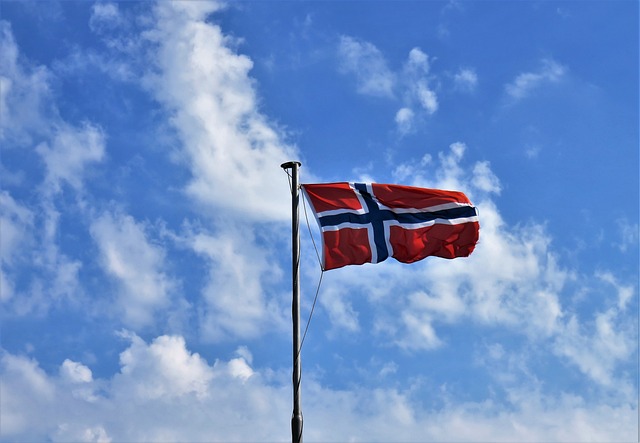April 18, 2024
Norwegian industrial managers report a moderate decline in production in manufacturing in the 1st quarter. New orders for the domestic market fell while it increased for the export market. The general expectations for the 2nd quarter of 2024 are moderate positive for producers of capital goods and consumer goods, while most of the producers of intermediate goods expect the development to be unchanged.
The business tendency survey for the 1st quarter of 2024 shows that overall industrial production fell moderately, but there are large sector differences. While for producers of and report a decline in production, the producers of are experiencing an increase.
Industrial leaders report growth in total industrial employment in the 1st quarter of 2024. It is the producers of capital goods that are responsible for the growth. Producers of consumer goods and intermediate goods report a decrease in employment.
Decreasing in total stock of orders
Overall, industrial leaders report a clear decline in new orders from the domestic market in the 1st quarter. This is the case for the producers of intermediate goods and consumer goods. Producers of capital goods, on the other hand, report unchanged new orders from the domestic market. It is also reported that there has been a slight increase in new orders from the export markets, overall. Producer of capital goods report an increase of new orders from the export market, while the majority of the producers of intermediate goods and consumer goods report a decrease.
The fall of new order from the domestic market and for some manufacturing groups from the export market contributes to a clear decrease of the stocks of orders during the 1st quarter.
Manufacturers of all product types report a decrease in overall stock of orders. Capital goods is dominated by businesses in the oil supply industry, which are particularly in the industry of building ships and oil platforms. Within this type of goods, there are reports of clear production growth combined with a decrease in new orders from the domestic market and a marked decrease in the total stock of orders. This is probably related to the fact that many contracts were signed with the Norwegian extraction industry in the wake of the decision to develop a number of new fields on the Norwegian continental shelf around a year ago. With few new field developments in the recent quarters, the growth in new orders from the domestic market first stopped and then fell in the last quarters in this industry. With ever-increasing production, the businesses within capital goods as a whole now have higher production than order growth, and thus a falling stock of orders.
-A sustained fall in the stock of order will probably result in a flattening or even a fall in the production volume within producers of capital goods, says senior advisor at Statistics Norway Ståle Mæland
Many industrial managers are reporting significant growth in the prices, both in domestic and export market for overall manufacturing in the 1st quarter. Price growth is reported by the producers of capital goods and consumer goods in both markets. The price level for the producer of intermediate goods is unchanged in both markets compared to the previous quarter. For producers of consumer goods, the growth in prices is particularly strong.
The levels of the diffusion indexes for prices on export and domestic markets are somewhat lower than in the previous quarter, which suggests that price growth is slowing down compared to previous quarters.
A large proportion of industrial managers report continued growth in in the 1st quarter. It is producers of consumer goods and capital goods that have the clearest growth in cost prices. Overall, stronger growth in cost prices than in product prices was reported, it is not surprising that there are reports of declining in manufacturing, as a whole, in the 1st quarter for all the producer types.
Positive expectations for the 2nd quarter of 2024
The general outlook for the 2nd quarter of 2024 is positive for manufacturing. The producers of intermediate goods have neutral expectations, while the producers of capital goods and consumer goods have a positive outlook for the coming quarter.
The industrial leaders expect higher total production volume and growth in average employment in the 2nd quarter compared to the 1st quarter of 2024. They expected no changed in new orders from the domestic market, while it is expected growth in new orders from the export market. The overall stock of orders is expected to remain unchanged.
It is the producers of intermediate goods who report the weakest future prospects. They expect an unchanged in production volume and a decrease of new orders from the domestic market, as well as a lower stock of order in the 2nd quarter of 2024. Producers of consumer goods expect unchanged production, lower employment, unchanged new orders from the domestic and export market.
The producers of capital goods expect continued growth in production, employment and new orders from both markets, and growth in overall stock of orders. The diffusion indices for all these expectation indicators are higher than they were in the previous survey
– It is also expected that the prices of intermediate goods, investment goods and consumer goods will continue to increase in industry as a whole in the second quarter of 2024, says Ståle Mæland.
Producers of all types also expect that the prices of intermediate goods will continue to increase in the 1st quarter of 2024, but to a somewhat lesser extent than before.
Industry leaders report that investment plans remain unchanged for the industry as a whole. In the survey of 3rd quarter of 2021, a new statistics table (see box at the bottom of the article) was introduced. This table shows the development in which factors the managers state as limiting the investments. In this quarter, there is a higher proportion of industrial leaders who state that financing costs limits investments. The proportion of industrial leaders who believe that the are a limiting factor on investment is still high.
The industrial confidence indicator suggests unchanged activity in the 2nd quarter
r in the 1st quarter of 2024 was 0.0 () which is up from -4.3 in the previous quarter. The indicator is still below the historical average of 2.9.
The industrial confidence indicator indicates a clear decline in production in the coming quarter for producers of intermediate goods and to a lesser extent for producers of consume goods. While the industrial confidence indicator for producers of capital goods, on the other hand, went from -2.9 to +3,7.
Values above zero indicate that total output will grow in the forthcoming quarter, while values below zero indicate that total output will fall. International comparisons of the industrial confidence indicator are available from Eurostat (EU), The Swedish National Institute of Economic Research and Statistics Denmark.
Access to qualified labor limits production
The proportion of industry leaders reporting that weak demand and strong competition limit is still relatively high and about the same level as in the previous quarter. At the same time, historically speaking, there is still a high proportion of industry managers who point out that a lack of qualified labor is a factor that contributed to limiting production in the 1st quarter. which was very high in connection with the pandemic, has fallen gradually in recent quarters.

The average for Norwegian manufacturing was calculated to 78.1 per cent at the end of the 1st quarter. This is about the same level as at the end of 4th quarter of 2023 and represents a break after two years of continuous decline in this indicator which had a local peak in 1st quarter of 2022. The capacity utilisation is still at a lower level than the historical average of 80.0 per cent. International comparisons of average capacity utilisation are available from Eurostat (EU).
Source: Statistics Norway
Legal Notice: The information in this article is intended for information purposes only. It is not intended for professional information purposes specific to a person or an institution. Every institution has different requirements because of its own circumstances even though they bear a resemblance to each other. Consequently, it is your interest to consult on an expert before taking a decision based on information stated in this article and putting into practice. Neither Karen Audit nor related person or institutions are not responsible for any damages or losses that might occur in consequence of the use of the information in this article by private or formal, real or legal person and institutions.






